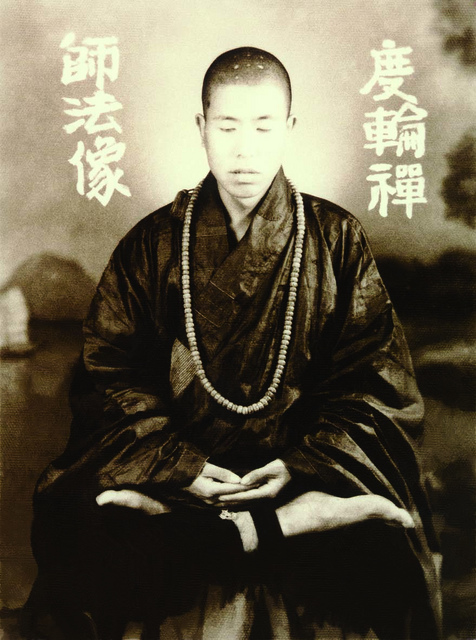|
Sukha
''Sukha'' (Pali and ) means happiness, pleasure, ease, joy or bliss. Among the early scriptures, 'sukha' is set up as a contrast to 'preya' (प्रेय) meaning a transient pleasure, whereas the pleasure of 'sukha' has an authentic state of happiness within a being that is lasting. In the Pāli Canon, the term is used in the context of describing Laity, laic pursuits and Dhyāna in Buddhism, meditation. Etymology According to Monier-Williams (1964), the etymology of ''sukha'' is "said to be ''su'' ['good'] + ''kha'' ['aperture'] and to mean originally 'having a good axle-hole'"; thus, for instance, in the Rigveda, Rig Veda ''sukha'' denotes "running swiftly or easily" (applied, e.g., to chariots). Monier-Williams also notes that the term might derive alternatively as "possibly a Prakrit, Prākrit form of ''su-stha'', q.v.; cf. ''duh̩kha''", literally meaning ''su'' ['good'] + ''stha'' ['standing']. ''Sukha'' is juxtaposed with ''dukha'' (Sanskrit; Pali: ''dukkha''; often ... [...More Info...] [...Related Items...] OR: [Wikipedia] [Google] [Baidu] |
Buddhist Cosmology
Buddhist cosmology is the description of the shape and evolution of the Universe according to Buddhist Tripitaka, scriptures and Atthakatha, commentaries. It consists of a temporal and a spatial cosmology. The temporal cosmology describes the timespan of the creation and dissolvement of alternate universes in different aeons. The spatial cosmology consists of a vertical cosmology, the various planes of beings, into which beings are reborn due to their merits and development; and a horizontal cosmology, the distribution of these world-systems into an infinite sheet of existential dimensions included in the cycle of samsara. The entire universe is said to be made up of five basic elements of Earth (classical element), Earth, Water (classical element), Water, Fire (classical element), Fire, Air (classical element), Air and Aether (classical element), Space. Buddhist cosmology is also intwined with the belief of Karma in Buddhism, Karma. As a result, some ages are filled with pr ... [...More Info...] [...Related Items...] OR: [Wikipedia] [Google] [Baidu] |
Vedanā
''Vedanā'' (Pāli and Sanskrit: वेदना) is an ancient term traditionally translated as either "feeling" or "sensation." In general, ''vedanā'' refers to the pleasant, unpleasant and neutral sensations that occur when our internal sense organs come into contact with external sense objects and the associated consciousness. Vedanā is identified as valence or "hedonic tone" in psychology. Vedanā is identified within the Buddhist teaching as follows: * One of the ''seven universal mental factors'' in the Theravāda Abhidharma. * One of the ''five universal mental factors'' in the Mahāyāna Abhidharma. * One of the twelve links of dependent origination (in both Theravāda and Mahāyāna traditions). * One of the five skandas (in both Theravāda and Mahāyāna traditions). * One of the objects of focus within the four foundations of mindfulness practice. In the context of the twelve links, craving for and attachment to vedanā leads to suffering; reciprocally, ... [...More Info...] [...Related Items...] OR: [Wikipedia] [Google] [Baidu] |
Karuṇā
() is generally translated as compassion or mercy and sometimes as self-compassion or spiritual longing. It is a significant spiritual concept in the Indic religions of Hinduism, Buddhism, Sikhism, and Jainism. Hinduism In Hinduism, is one of the fundamental virtues and qualities that a spiritual aspirant is encouraged to cultivate. Many Hindu deities are depicted as embodiments of compassion. Karuṇā is often linked with other virtues such as "Maitri" (loving-kindness) and "Ahimsa" (non-violence). Together, these virtues form the foundation of a righteous and spiritually fulfilling life. The word comes from the Sanskrit kara, meaning “to do” or “to make,” indicating an action-based form of compassion, rather than the pity or sadness associated with the English word. In Hindu mythology, the concept of "Karuṇā" or compassionate action is deeply embedded and is often illustrated through stories, characters, and teachings. Each avatar's story of Hindu pantheon is ... [...More Info...] [...Related Items...] OR: [Wikipedia] [Google] [Baidu] |
Dhyāna In Buddhism
In the oldest texts of Buddhism, ''dhyāna'' () or ''jhāna'' () is a component of the training of the mind (''bhavana''), commonly translated as Buddhist meditation, meditation, to withdraw the mind from the automatic responses to sense-impressions and "burn up" the Kleshas (Buddhism), defilements, leading to a "state of perfect equanimity and awareness (''Upekṣā, upekkhā-Sati (Buddhism), sati-Purity in Buddhism, parisuddhi'')." ''Dhyāna'' may have been the core practice of pre-sectarian Buddhism, in combination with several related practices which together lead to perfected mindfulness and detachment. In the later commentarial tradition, which has survived in present-day Theravada, Theravāda, ''dhyāna'' is equated with "concentration", a state of one-pointed absorption in which there is a diminished awareness of the surroundings. In the contemporary Theravāda-based Vipassana movement, this absorbed state of mind is regarded as unnecessary and even non-beneficial for t ... [...More Info...] [...Related Items...] OR: [Wikipedia] [Google] [Baidu] |
Happiness
Happiness is a complex and multifaceted emotion that encompasses a range of positive feelings, from contentment to intense joy. It is often associated with positive life experiences, such as achieving goals, spending time with loved ones, or engaging in enjoyable activities. However, happiness can also arise spontaneously, without any apparent external cause. Happiness is closely linked to well-being and overall life satisfaction. Studies have shown that individuals who experience higher levels of happiness tend to have better physical and mental health, stronger social relationships, and greater resilience in the face of adversity. The pursuit of happiness has been a central theme in philosophy and psychology for centuries. While there is no single, universally accepted definition of happiness, it is generally understood to be a state of mind characterized by positive emotions, a sense of purpose, and a feeling of fulfillment. Definitions "Happiness" is subject to deb ... [...More Info...] [...Related Items...] OR: [Wikipedia] [Google] [Baidu] |
Householder (Buddhism)
In English translations of Buddhist texts, householder denotes a variety of terms. Most broadly, it refers to any layperson, and most narrowly, to a wealthy and prestigious familial patriarch. In contemporary Buddhist communities, householder is often used synonymously with ''laity'', or non-monasticism, monastics. The Buddhist notion of householder is often contrasted with that of wandering ascetics (: '; Sanskrit: ') and Buddhist monasticism, monastics (''bhikkhu'' and ''bhikkhuni''), who would not live (for extended periods) in a normal house and who would pursue freedom from attachments to houses and families. Upāsaka and Upāsikā, Upāsakas and upāsikās, also called śrāvaka, śrāvakas and śrāvikās - are householders and other laypersons who refuge (Buddhism), take refuge in the Three Jewels (the Gautama Buddha, Buddha, the Dharma, teachings and the sangha, community) and practice the Five Precepts. In southeast Asian communities, lay disciples also Alms#Buddhis ... [...More Info...] [...Related Items...] OR: [Wikipedia] [Google] [Baidu] |
Gautama Buddha
Siddhartha Gautama, most commonly referred to as the Buddha (),* * * was a śramaṇa, wandering ascetic and religious teacher who lived in South Asia during the 6th or 5th century BCE and founded Buddhism. According to Buddhist legends, he was born in Lumbini, in what is now Nepal, to royal parents of the Shakya clan, but Great Renunciation, renounced his Householder (Buddhism), home life to live as a wandering ascetic. After leading a life of mendicancy, asceticism, and meditation, he attained Nirvana (Buddhism), nirvana at Bodh Gaya, Bodh Gayā in what is now India. The Buddha then wandered through the lower Indo-Gangetic Plain, teaching and building a Sangha, monastic order. Buddhist tradition holds he died in Kushinagar and reached ''parinirvana'' ("final release from conditioned existence"). According to Buddhist tradition, the Buddha taught a Middle Way between sensual indulgence and severe asceticism, leading to Vimutti, freedom from Avidyā (Buddhism), ignora ... [...More Info...] [...Related Items...] OR: [Wikipedia] [Google] [Baidu] |
Maitrī
(Sanskrit; Pali: ) means benevolence, loving-kindness, friendliness, amity, good will, and active interest in others. It is the first of the four sublime states () and one of the ten of the Theravāda school of Buddhism. The cultivation of benevolence () is a popular form of Buddhist meditation. It is a part of the four immeasurables in (divine abidings) meditation. as "compassion meditation" is often practiced in Asia by broadcast chanting, wherein monks chant for the laity. The compassion and universal loving-kindness concept of is discussed in the ''Metta Sutta'' of Buddhism, and is also found in the ancient and medieval texts of Hinduism and Jainism as or . Small sample studies on the potential of suggest potential benefits. However, peer reviews question the quality and sample size of these studies. Etymology and meaning is a Pali word, from which was itself derived from which, states Monier-Williams, means "friend". The term is found in this sense in the Ve ... [...More Info...] [...Related Items...] OR: [Wikipedia] [Google] [Baidu] |
Mudita
''Muditā'' (Pāli and Sanskrit Sanskrit (; stem form ; nominal singular , ,) is a classical language belonging to the Indo-Aryan languages, Indo-Aryan branch of the Indo-European languages. It arose in northwest South Asia after its predecessor languages had Trans-cultural ...: मुदिता) is a dharmic concept of joy, particularly an especially sympathetic or vicarious joy—the pleasure that comes from delighting in other people's well-being. The traditional paradigmatic example of this mind-state is the attitude of a parent observing a growing child's accomplishments and successes. Application Mudita meditation cultivates appreciative joy at the success and good fortune of others. The Buddha described this variety of meditation in this way: Buddhist teachers compare mudita to an inner spring of infinite joy that is available to everyone at all times, regardless of circumstances. Joy is also traditionally regarded as the most difficult to cultivate of ... [...More Info...] [...Related Items...] OR: [Wikipedia] [Google] [Baidu] |
Brahmavihara
The (sublime attitudes, lit. "abodes of Brahma") is a series of four Buddhist virtues and the meditation practices made to cultivate them. They are also known as the four immeasurables (Pāli: ) or four infinite minds ( Chinese: ). The are: # loving-kindness or benevolence () # compassion () # empathetic joy () # equanimity () According to the '' Metta Sutta'', cultivation of the four immeasurables has the power to cause the practitioner to be reborn into a "Brahma realm" (Pāli: ). Etymology and translations * Pāli: * (sathara brahmavihārā) * , ( Wylie: ) may be parsed as "" and "", which is often rendered into English as "sublime" or "divine abodes". , usually translated as "the immeasurables", means "boundlessness, infinitude, a state that is illimitable". Rhys Davids & Stede, 1921–25, ''Pali-English Dictionary'', Pali Text Society. When developed to a high degree in meditation, these attitudes are said to make the mind "immeasurable" and like the mind of ... [...More Info...] [...Related Items...] OR: [Wikipedia] [Google] [Baidu] |


